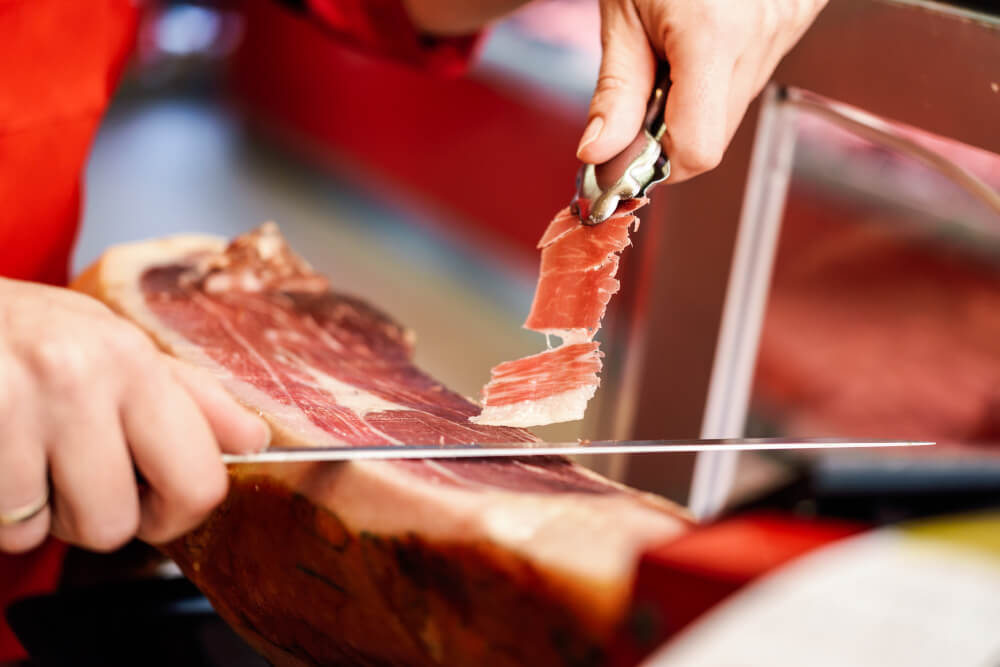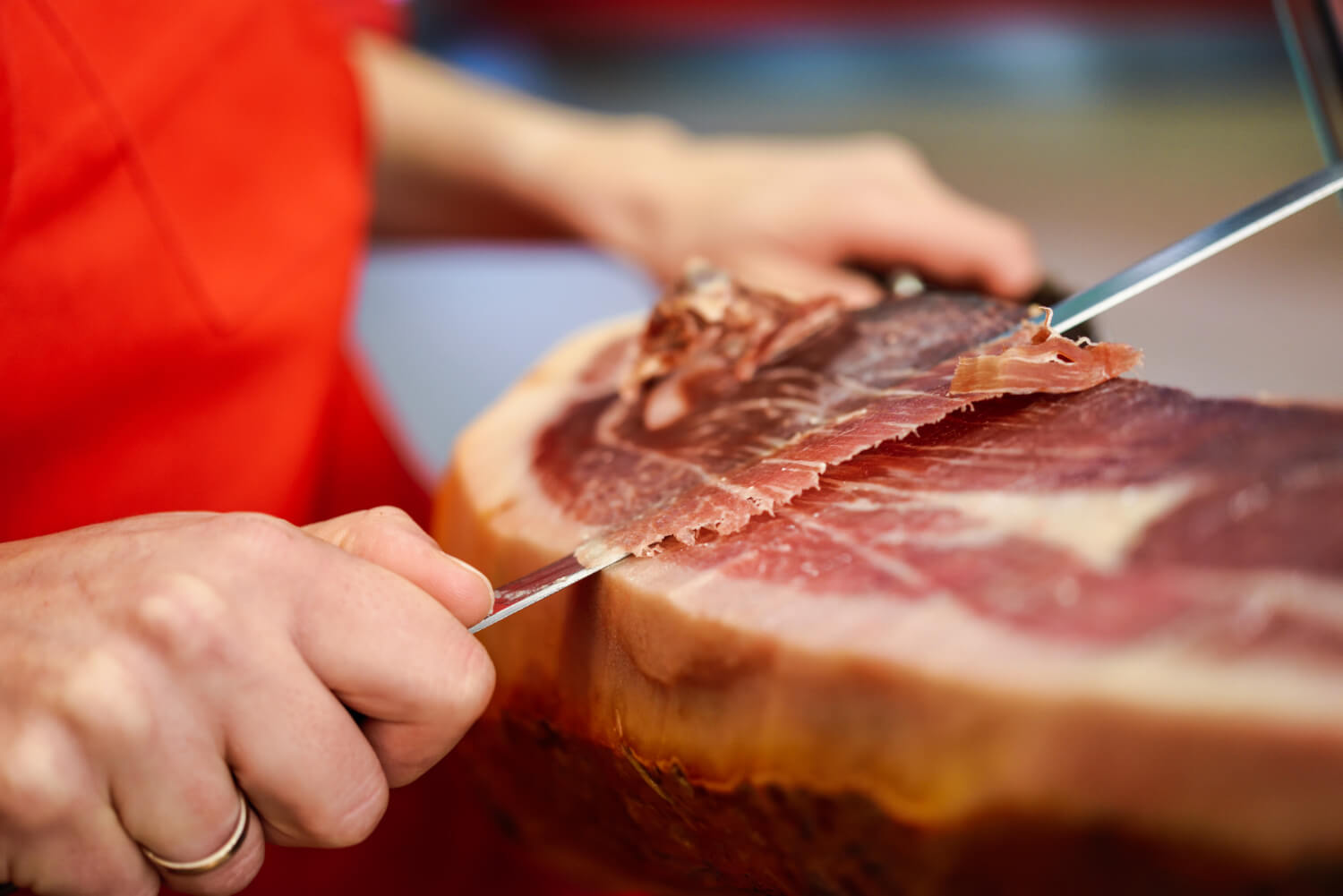Why is it important to sharpen the ham knife?
A sharp knife makes cutting easier and improves control over the thickness of the slices. If the knife is dull, precision is lost, which can affect both the performance and presentation of the ham. A dull knife requires more force, which increases the risk of accidents. Sharpening your knife regularly improves the cut and protects you from possible injuries.


Tools necessary to sharpen a ham knife
To sharpen a ham knife properly, you will need the right tools. There are several options, but the most common are:
- Whetstone: This traditional method allows you to sharpen the edge in a controlled manner.
- Hand or electric sharpener: they are easier to use and allow you to obtain a good result without much experience.
- Chair: although it does not sharpen as such, the sharpening steel is used to maintain the edge between sharpening. It is ideal for quick maintenance.
Steps to sharpen a ham knife
Preparation
Before you begin, make sure your sharpening tools are clean. If you use a sharpening stone, moisten it with water or oil, according to the manufacturer’s directions, to make the process easier. If you use an electric or handheld sharpener, follow the instructions on the device.
Enjoy an unforgettable Ham tasting!
Sharpening angle
The sharpening angle is key to obtaining a good result.The ideal is to maintain an angle of 20 degrees for the ham knife. Place the blade on the stone or sharpener maintaining this angle and make sure to keep it constant throughout the entire process.
Sheet movement
Begin sliding the blade from the base to the tip, maintaining the sharpening angle and applying gentle, even pressure. Repeat this movement 5 to 10 times on each side of the knife. If you are using an electric sharpener, simply pass the blade through the slots following the manufacturer’s instructions.
Use of the sharpening steel
Once the knife has been sharpened, you can use a sharpening steel to seat the edge and remove any burrs.Slide the knife along the sharpening steel at a 20-degree angle, alternating both sides of the blade.This process improves the edge and prolongs its life.
Maintenance of the ham knife
To prolong the sharpness of your knife, it is important to take proper care of it. Avoid cutting bones or hard surfaces, as they can damage the edge. Although if cutting ham is not your thing, you can always hire ham cutters who will do the job for you. After each use, wash the knife by hand with warm soapy water, drying it immediately to prevent corrosion. Storing the knife in a safe place, such as a sheath or knife block, will also help keep it sharper longer.


Correctly sharpening a ham knife is important to enjoy an efficient and safe cut. With the right tools and following the steps described, you can keep your knife in optimal condition. Remember that regular maintenance prolongs the life of the tool and improves the quality of the cut. If you have questions about the process, visit our ham tastings at Jamón Experience and discover more about how to care for your tools.

